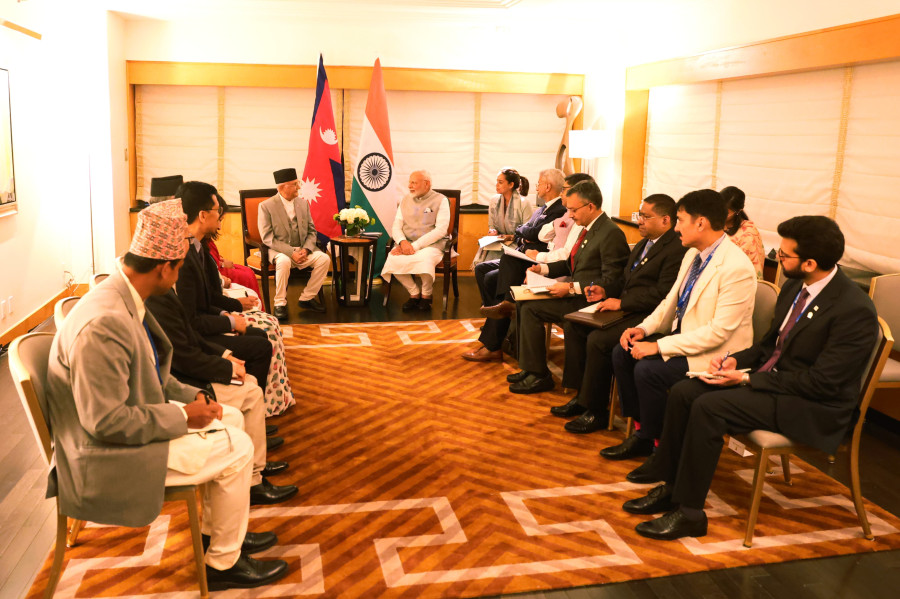Editorial
Always good to talk
Sunday’s meeting between Prime Minister KP Oli and his Indian counterpart Narendra Modi is loaded with symbolism.
On Sunday, Nepal’s Prime Minister KP Sharma Oli met his Indian counterpart Narendra Modi on the sidelines of the United Nations General Assembly in New York. Although there was little in terms of outcomes, it was nonetheless an important meeting. Top Indian leaders and bureaucrats have been reluctant to engage with Oli following his 2020 initiative to insert into the Nepali national charter a map of Nepal incorporating Kalapani. The Indians were also upset, unsurprisingly, when Oli, during his previous stint as prime minister, mocked the official Indian emblem, saying it represented the adage ‘Singhamev Jayate’ (power alone triumphs) rather than ‘Satyamev Jayate’ (truth alone triumphs). Separately, the CPN-UML chief riled the BJP establishment when he baselessly claimed that Lord Ram was born in Nepal’s Thori rather than India’s Ayodhya. So India has good reasons not to trust Oli. Yet the way it was consistently rebuffing Oli’s recent overtures for a bilateral meeting with Modi was unbecoming too. The Indians may not particularly like Oli, ‘China’s man’ in the reckoning of many Indian analysts. Yet they also cannot refuse to engage with the elected leader of a traditionally close partner country.
Given the closeness of their relationship, Nepal and India have no option but to continue to engage at all levels, at all times. For instance, Sunday’s meeting may not have led to anything more substantive than Modi’s assurance that he will soon visit Nepal. But just the fact that the two leaders met is loaded with symbolism. India, which claims undisputed leadership of South Asia, cannot fulfil that role by sidelining the democratically elected leaders of its neighbouring countries. Such an approach will also be a mockery of Modi’s Neighbourhood First policy. It is vital for heads of government to talk as that sends a positive message down the official chain of command, opening up many new avenues of cooperation. For Oli, the meeting was also a matter of optics. Just like Modi likes to buttress his image at home by presenting himself as a rock star in his mass rallies abroad, Nepali leaders do so through their engagements with top world leaders, particularly those of India and China. Prime Minister Oli will now no doubt play up his meeting with Modi, while trying to rubbish the claim that India somehow wants to see him gone soon.
Whatever the case, it is wonderful that the Nepali and Indian prime ministers are talking. This time, the Nepali side could not discuss its preferred issues like Kalapani and Eminent Persons' Group (EPG). But these issues can be brought up at different bilateral mechanisms between the two countries that the two prime ministers agreed to revive on Sunday. In the larger scheme of things, India’s leadership of the South Asian region has again come under scrutiny following the ignominious fall of one of its darlings, Sheikh Hasina of Bangladesh. The lesson for New Delhi is clear enough: Stop trying to pick favourites in the neighbourhood. That will only backfire in the long run. A better course of action for India would be to continue to engage all democratic constituencies in the region and let the democratic process take its own natural course—be it in Bangladesh, Sri Lanka or Nepal. On the part of Nepali leaders, they must forswear their dual nature whereby they become the most ardent anti-India critics, only to later try to cosy up to New Delhi when it is politically expedient for them to do so.




 13.12°C Kathmandu
13.12°C Kathmandu












%20(1).jpg&w=300&height=200)

